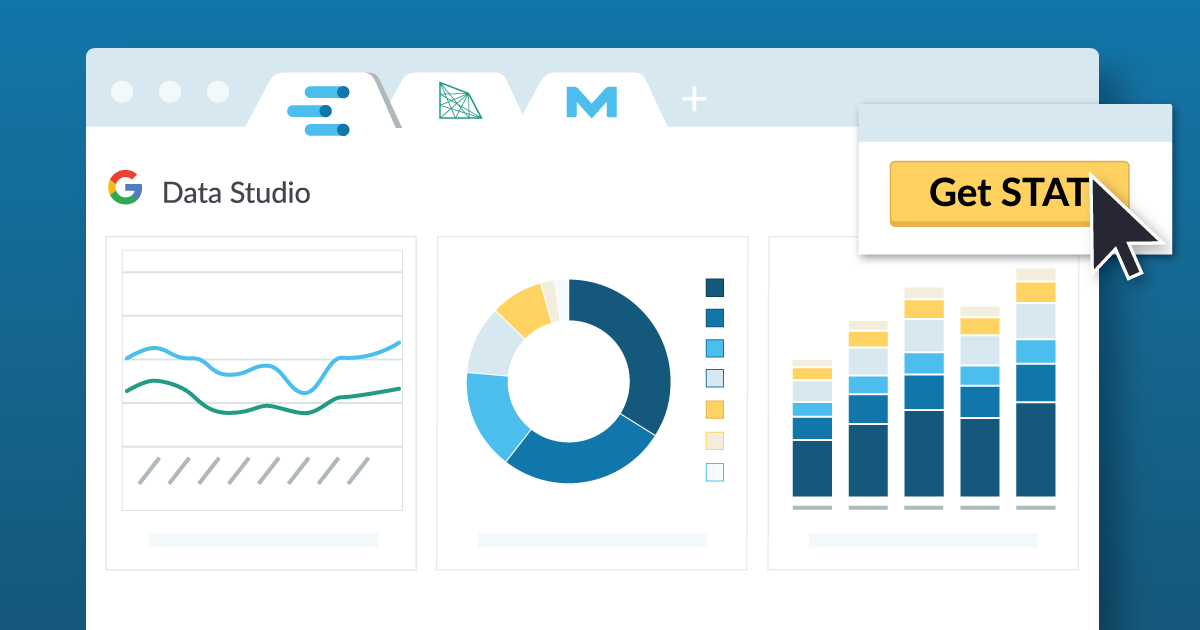Since Moz released the new Google Files Studio Connectors for STAT, you might maybe well be questioning how one can simplest implement them on your reporting strategy. My colleagues at Course Interactive and I fully fancy how granular you might maybe well get along with your reviews in STAT, and lastly having the flexibility to cleanly and effectively pull these reviews into Files Studio (the software we employ for our own reporting) is a godsend.
Whereas the Historical Keyword Rankings connector reviews on sinful over time, it would also simply no longer be as obvious how one can file on sinful change over time. On this put up, I could come up with step-by-step steering on how one can file on sinful change — moreover to a pair varied filtering and reporting pointers — while using the connectors internal Google Files Studio.
Within the event you are no longer a STAT user but nonetheless you ought to must know the design in which it might maybe maybe possibly well match into your SEO toolkit, you might maybe well take a tour of the product. Click on on the button below to space one up!
Connecting your recordsdata offer
Earlier than you start, it’s well-known to identify about a things to space up the connector: your STAT Keyword API Key, the Mission ID, and your Establish ID. Within the event you don’t already know the design one can identify these by skill of the STAT API, you might maybe well head over to STAT’s documentation right here to learn extra. After you’ve identified these, it’s time to join your recordsdata offer.
We’re going to be doing something a tiny bit out of the frequent right here, nonetheless follow me — you’ll seek why in real a 2nd!
For this step, we will be connecting two instances of the same offer. Because our aim is to examine sinful change over time, we’ll employ the same offer twice to identify these deltas.
When organising your connector, be sure to call the provision something that you’ll with out problems idea:

In my case, I usually traipse with something easy equivalent to “[client name] STAT Keyword Connector.” When right here’s full, repeat the step above, nonetheless name it something varied, e.g. “[client name] STAT Keyword Connector 2.”
At final, produce sure the metrics you intend on evaluating contain queer names for each and every connector. To attain so, traipse into your recordsdata offer. Click on on the metric’s name so as that you might maybe well rename it, after which rename it something queer. For this case we will be doing it for “Google Unpleasant Rank,” since we’re evaluating ranks, nonetheless it would even be achieved for “Google Rank,” if we wanted to examine that. All as soon as more, I love to real clutch it easy: for the main recordsdata offer call it “Google Unpleasant Rank 1,” after which for the 2nd recordsdata offer call it “Google Unpleasant Rank 2.” When all is alleged and achieved, it would also simply aloof gaze something love this:
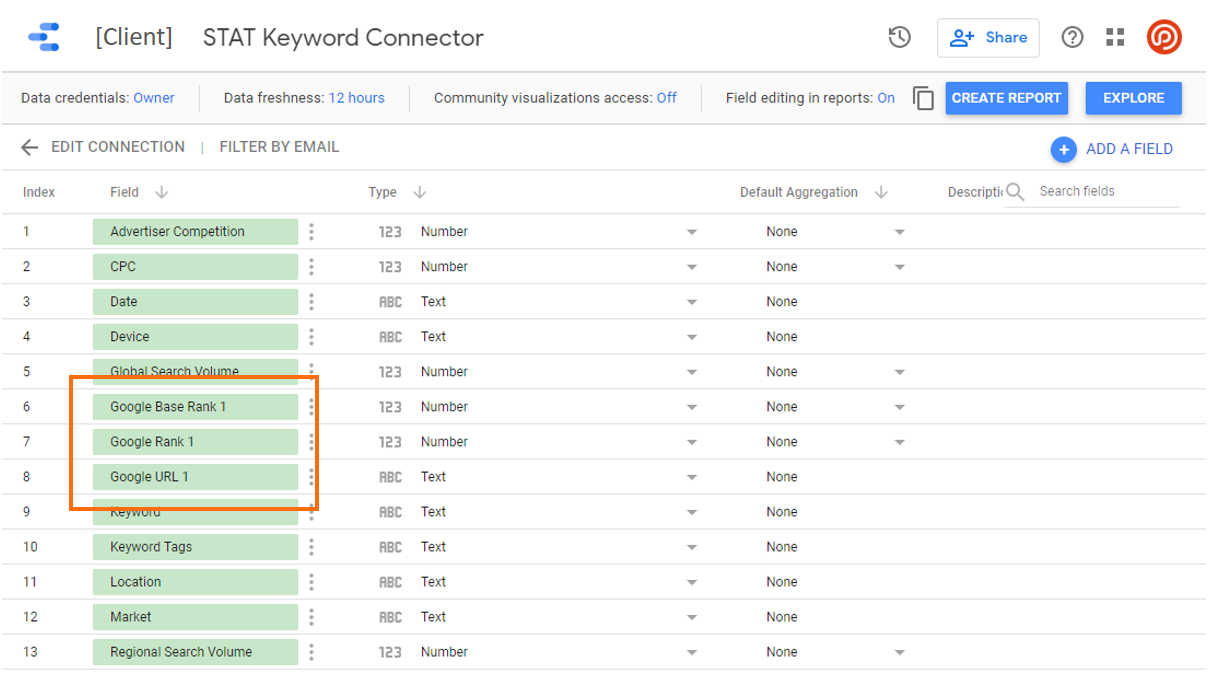
Building your desk and blending recordsdata
Now we’ll start to get a tiny bit extra technical. Mixing the recordsdata of the 2 connectors permits you to examine two instances of rankings against each and every varied. Your closing consequence will catch a desk showing the ranks of two given dates, moreover to their sinful change. The five-step direction of will gaze love this:
- Blend recordsdata of key phrase connectors one and two
- Add to your typical metrics for the 2 sources (key phrase at the minimum, nonetheless you might maybe well presumably also add in predicament, design, market, and search quantity)
- Add within the metric you would truly like reported (Google snide sinful and/or Google sinful)
- Space date differ
- Apply “No Null” filter
1. Blend recordsdata of key phrase connectors one and two
The first step right here is to blend the 2 connectors so as that you might maybe well examine two instances of ranks against each and every varied.
First, it’s well-known to get a brand new file, or traipse real into a file that’s already space up. Next, pick on out your recordsdata offer. Right here you might maybe well pick on out the main instance of the provision that you space up earlier (must you’re starting on a new file, it’ll quiz you so as to add a recordsdata offer straight away). Once chosen, click on “Blend Files” under the recordsdata offer on the simply hand facet of Google Files Studio, considered right here:
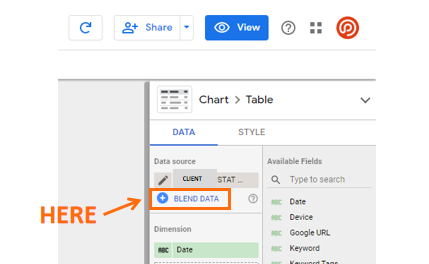
This might maybe maybe well simply inform you to the Blend Files offer software. From right here you pick on out so as to add one other recordsdata offer, being your 2nd instance of the connector.
2. Add to your typical metrics
Whereas you might maybe well presumably also simply contain chosen to blend both connectors, it’s well-known to space your metrics. In direction of the head, you’ll seek “Be part of keys.” Right here’s in reference to what’s occurring to be the same for both instances, so right here at the minimum, you ought to must incorporate “key phrase.” Actually be at liberty to debris round right here with adding varied metrics.
Existing: We’ll traipse over this later, nonetheless must you intend on having varied graphs filtered by a obvious trace or predicament, produce sure so as to add these in right here.
3. Add within the invent of sinful you might maybe well deserve to contain reported
After atmosphere your metrics below “Be part of keys,” now pick on out the metrics that will seemingly be queer for each and every date. Looking on what you ought to must examine, below “Metrics” you might maybe well pick on “Google Unpleasant Rank,” “Google Rank,” or both. You might maybe well well simply additionally contain “Date” right here too must you desire. Once achieved, click on “SUM” subsequent to the metric name, and alter this to “MIN.” You are going to hunt why in real a 2nd.
At this level, your blended recordsdata might maybe well simply aloof gaze something love this:
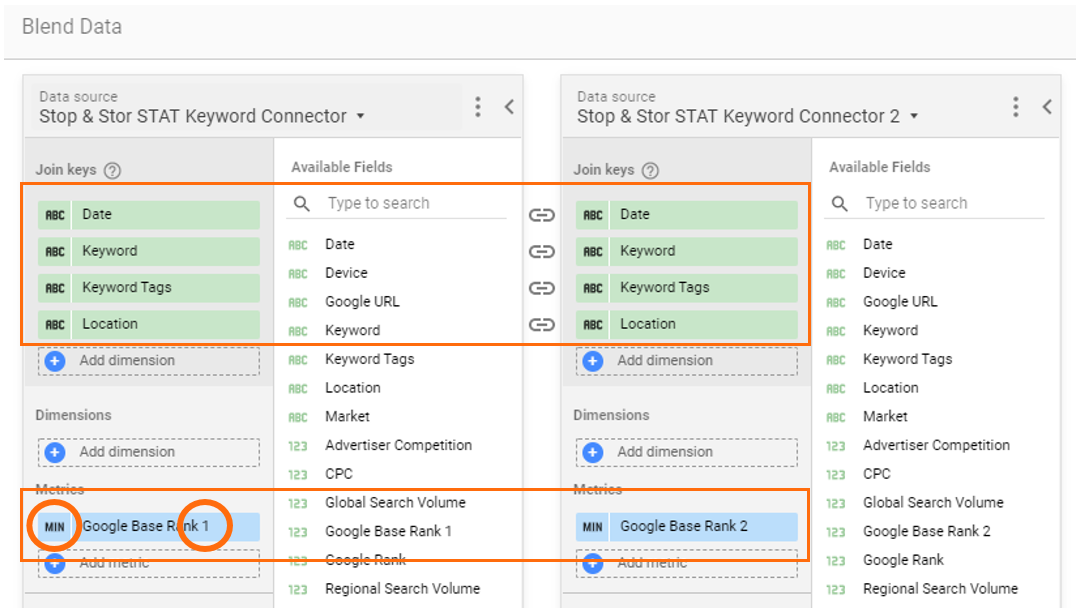
4. Space date differ
Now it’s well-known to space the 2 date ranges you are evaluating to each and every varied.
To attain this, below the main connection, space your first date: Below “Date Vary,” click on “Customized,” then click on the self-discipline to clutch your date. Right here you might maybe well presumably seek that there is an option for two dates, nonetheless for this solution, we’re using the same date for each and every connector.
Within the cease, it’ll be something love “Connector 1” chosen for the “start date” and “cease date” because the main of the month, and for “Connector 2,” the “start date” and “cease date” incessantly is the final of the month. Right here’s surely pulling within the sinful for the main instance moreover to the 2nd instance, so that you might maybe well examine the 2.
5. Space “No Null” filter
The final step in organising your blended recordsdata is creating a “No Null” filter. When the main phrase connector reviews on ranks that your divulge is no longer ranking for, this might maybe maybe well return as “null.” To clutch faraway from flooding your recordsdata with fluff, it’s well-known to get a filter placing off instances of “null.”
First, click on “Add A Filter” below where you chosen the date differ. Next, in opposition to the bottom, click on “Make A Filter.” Space the parameters of the filter as “Exclude” > “Google Unpleasant Rank 1 (2)” > “Is Null.” Guarantee to call the filter something identifiable equivalent to “No Null.” It might maybe well well maybe also simply aloof gaze love this:
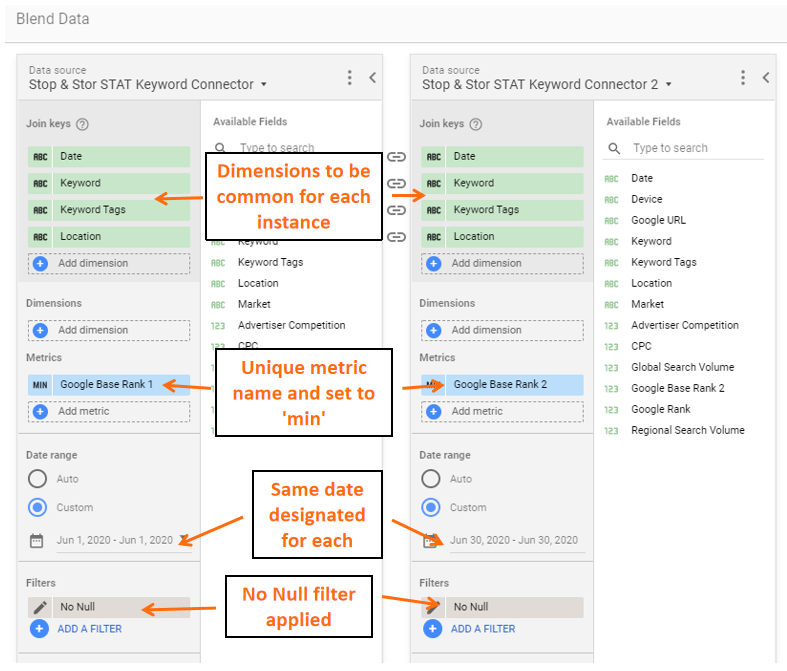
Applying sinful change to your file
Now you might maybe well get a brand new self-discipline that can file on the sinful change by making a calculated self-discipline to search out the adaptation of the 2 ranks.
Below dimensions, pick on out “Add Dimension,” and click on “Make Field.” You might maybe well well name it “Rank Change,” nonetheless to get the self-discipline, start typing “Google Unpleasant Rank,” and you’ll seek your instances from each and every connector advance up. To present the calculated self-discipline, pick on out your “Google Unpleasant Rank 1” and subtract it from “Google Unpleasant Rank 2,” so it would also simply aloof gaze something love this:
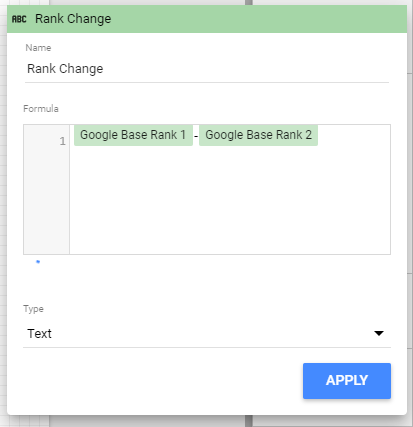
Hit follow, and now your sinful change desires to be calculated!
There is also an additional approach to get the same consequence, nonetheless with about a drawbacks, equivalent to no longer being ready to call the header, moreover to no longer being ready to filter or style your sinful change. The profit to this design is that it’s more uncomplicated to space up firstly, as you don’t in fact must blend the recordsdata. Alternatively, no longer organising the blended recordsdata can even forfeit having the initial sinful visible. When to your edit peep, space a personalized date differ that you’re reporting on below “Default date differ.” Right here, you might maybe well then space a comparison date: if looking out lend a hand a month, you might maybe well space this to the main. Within the event you traipse with this option, it would also simply aloof gaze love this:
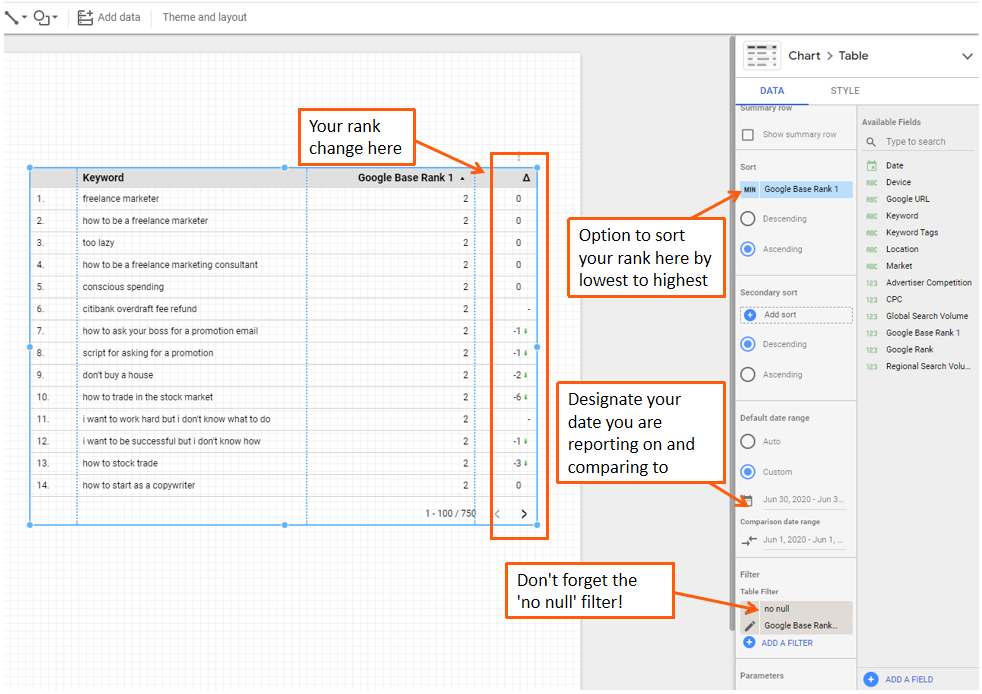
Head into the “Style” tab, where you might maybe well change the comparison to “Expose Absolute Change” below “Metrics.” You might maybe well well change the colors of your sure and detrimental arrows to extra precisely picture the circulate (you might maybe well seek from above that the “detrimental” change is a inexperienced arrow, this defaults to crimson).
The usage of filters
Applying filters to your recordsdata space might maybe well simply additionally be extraordinarily priceless to making sense of your recordsdata! The usage of filters with the connector can abet you to section out rankings for a particular predicament, or get charts that put rankings for a particular key phrase neighborhood that you’ve space up using key phrase tags.
Eradicate a gaze at this file I space up let’s declare. Interior STAT, I created key phrase tags to aim areas sure by what zip code they contain been. Then, I became as soon as ready to get a filter for each and every chart focusing on that key phrase trace:
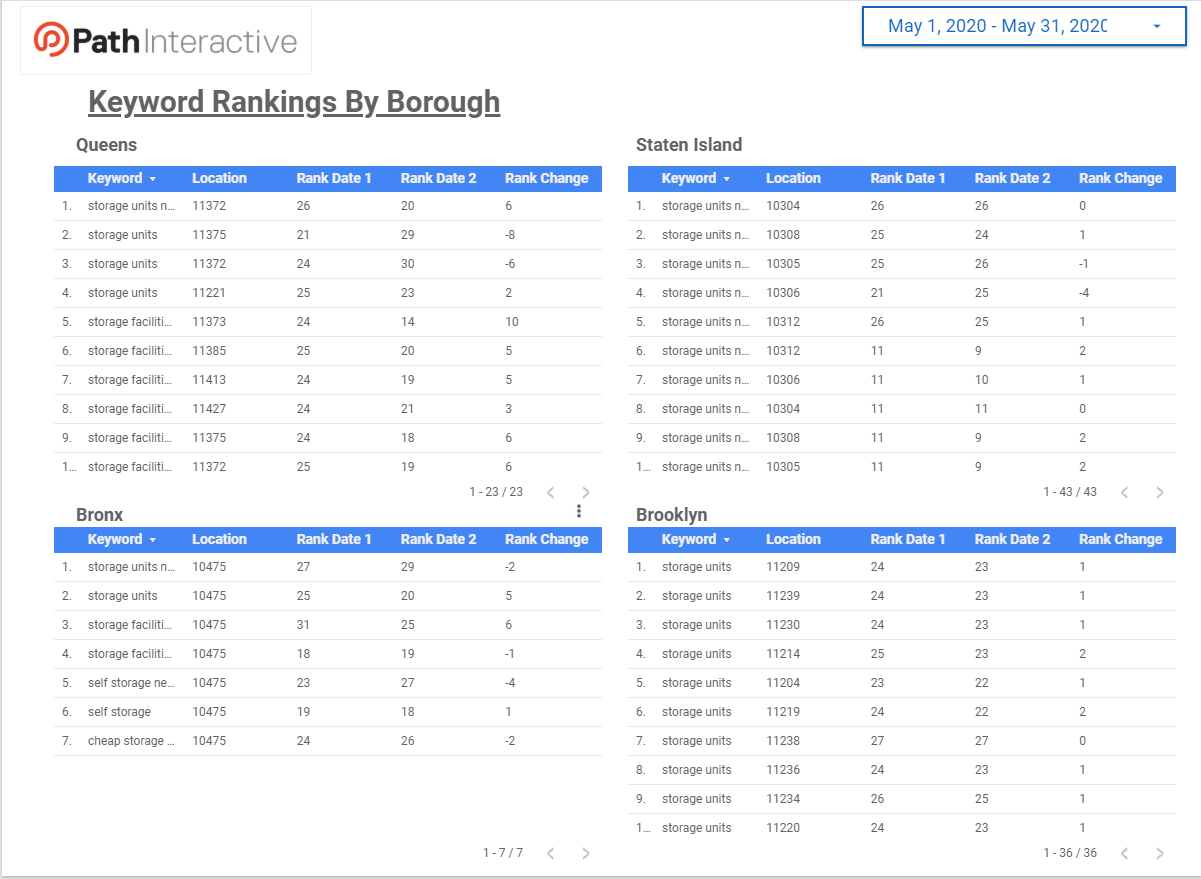
Environment filters up is extraordinarily easy. First, traipse into edit mode. Next, scroll down the facet except you obtain “Filter.” Then below Filter > Table Filter, click on “Add a Filter.” This might maybe maybe well simply inform you to the filter picker. Toward the bottom, click on “Make a Filter.” Right here you might maybe well space the parameters for the filter you would truly like to put.
Some of my varied favorites contain filtering to finest put the head few pages (filters out non-relevant and excessive ranks), using the main phrase trace filter love I showed before, and likewise filtering by predicament. Nonetheless you don’t must quit there! Collectively with within the further dimensions within the market to you within the connector, you might maybe well employ the filter to put things equivalent to desktop vs. cellular or how your key phrase ranking performance does in varied markets.
Mixing your Google Analytics, Google Search Console, and STAT recordsdata
Regarded as one of my current makes employ of for the connectors is the flexibility to blend the recordsdata along with your Google Analytics and Google Search Console recordsdata. By blending this recordsdata collectively, you’re ready to at as soon as tie key phrase rankings with varied metrics, equivalent to clicks or aim completions.
You’re doubtlessly a talented at blended recordsdata at this level, nonetheless real for reference, the recordsdata blended might maybe well simply aloof gaze love this:
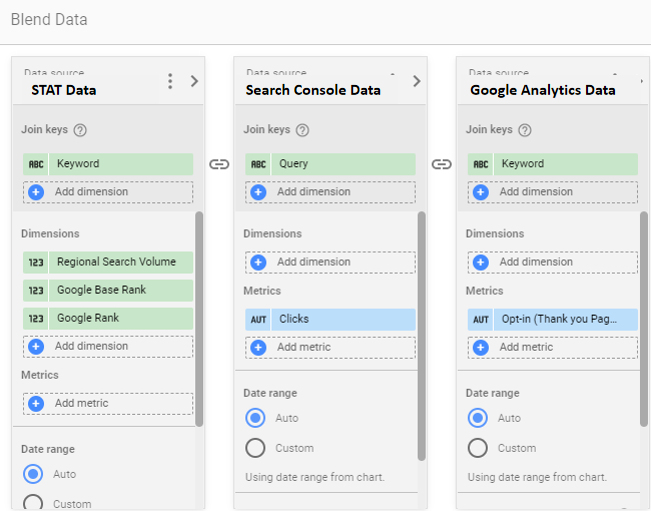
About a things to put: it’s principal what uncover you build the connectors in. I’ve learned that adding the STAT connector first works simplest (i.e. must you build Google Analytics first, you’ll get a file with the nasty “no longer learned” key phrase). Additionally, to drag in Search Console recordsdata in uncover to ascertain along with your varied connectors, using “Question” can contain the same produce as “Keyword.”
The would gaze something love this, nonetheless in fact be at liberty to edit the catch the approach you wish!
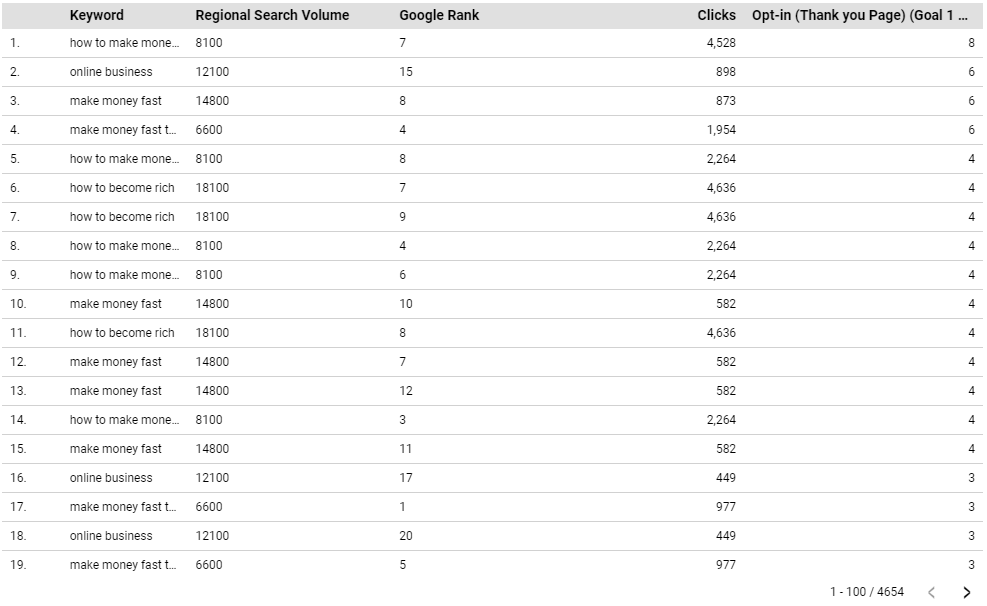
Now you might maybe well traipse even further with this and match up URLs, nonetheless this would require some RegEx.
You are going to rename the “Google URL” self-discipline in STAT and “Touchdown Online page” self-discipline in Google Search Console in uncover to ascertain the URL enhance convection internal Google Analytics by taking away the domain fragment of the URL. To attain this, traipse into your recordsdata offer for each and every STAT connector and Google Search Console, and click “Add A Field” within the head simply.
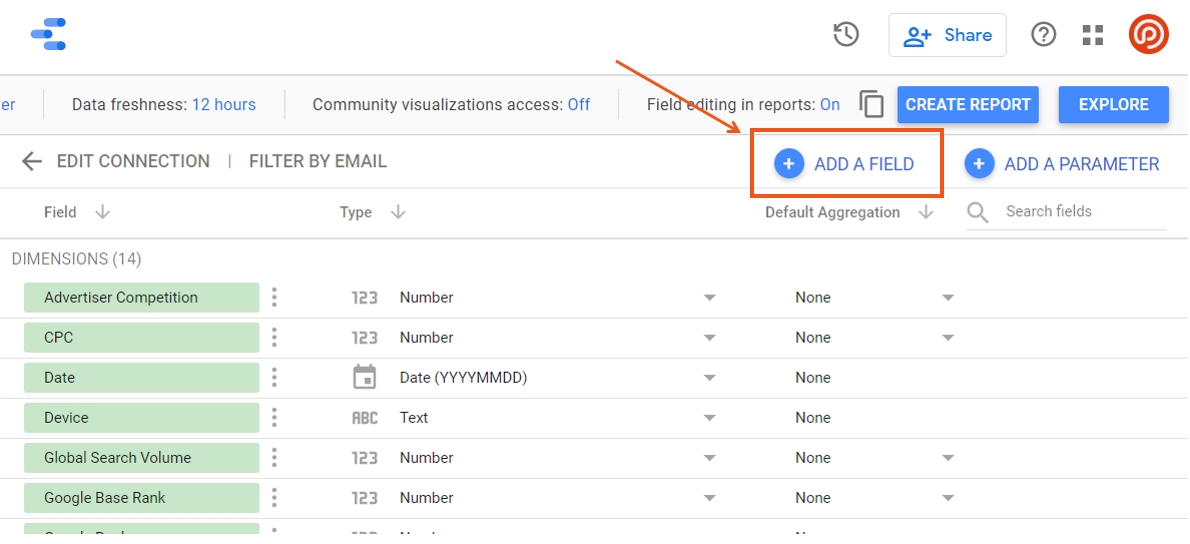
Next, enter to following RegEx for the STAT connector:
REGEXP_REPLACE(Google URL, “.*[\.]com”, “”)
And for Google Search console:
REGEXP_REPLACE(Touchdown Online page, “.*[\.]com”, “”)
Endure in mind to call them something to distinguish from the default self-discipline. I employ “Touchdown Online page (no domain).”
When constructing a file, employ these new fields for consistency real thru the URL enhance so as that, whenever you happen to make a selection on out them when blending recordsdata, they are able to match.
Suppose this approach within the same approach as above to get the desired results of pulling in recordsdata from real thru all three connectors to ascertain up with each and every varied! Within the cease you desires so as to search out what key phrase ranks for what URL, moreover to contain many sessions or clicks that are introduced in moreover to aim completions, or any varied combination.
Effectively there you might maybe well presumably also simply contain it! Hope this became as soon as priceless to you. Within the event you might maybe well presumably also simply contain any varied questions you might maybe well comment below or obtain me on Twitter @ianpfister. Entirely contented reporting!
To abet us lend a hand you greater, please clutch in mind taking the 2020 Moz Weblog Reader Uncover about, which asks about who you are, what challenges you face, and what you would truly like to hunt extra of on the Moz Weblog.

